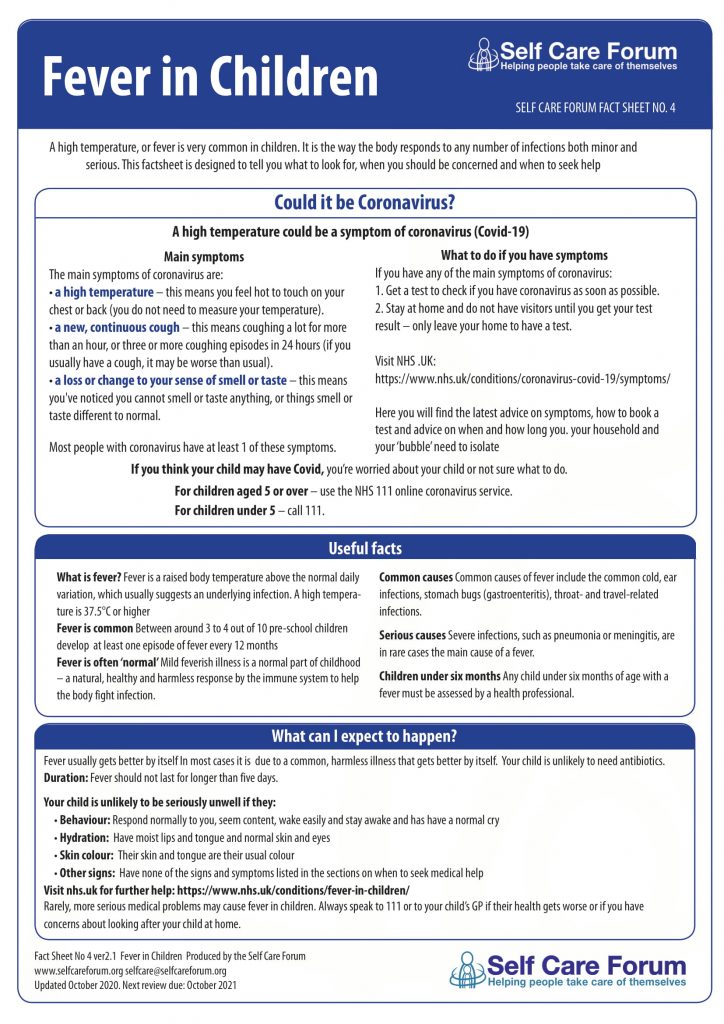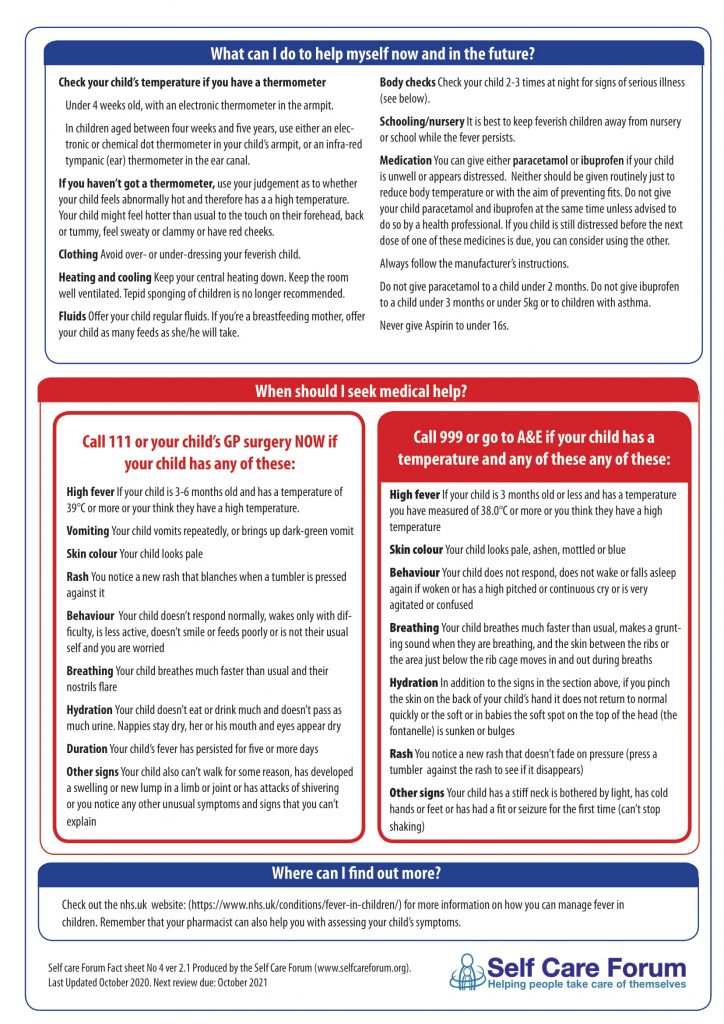High temperature is very common in young children. The temperature usually returns to normal within 3 or 4 days.
What is a fever?
Important
A normal temperature in babies and children is about 36.4C, but this can vary slightly from child to child.
A fever is a high temperature of 38C or more.
Fever is the body’s natural response to fighting infections like coughs and colds.
Many things can cause a high temperature in children, from common childhood illnesses like chickenpox and tonsillitis, to vaccinations.
Checking a high temperature
Your child might:
•feel hotter than usual to the touch on their forehead, back or tummy
•feel sweaty or clammy
•have red cheeks
Use a digital thermometer (which you can buy from pharmacies and supermarkets) to take your child’s temperature.How to take your child’s temperature
What to do if your child has a high temperature
You can usually look after your child or baby at home. The temperature should go down over 3 or 4 days.
Do
give them plenty of fluids
look out for signs of dehydration
give them food if they want it
check on your child regularly during the night
keep them at home
give them paracetamol or ibuprofen if they’re distressed or unwell
Don’t
undress your child or sponge them down to cool them – fever is a natural and healthy response to infection
cover them up in too many clothes or bedclothes
give aspirin to under 16s
combine ibuprofen and paracetamol, unless your GP tells you to
give paracetamol to a child under 2 months
give ibuprofen to a child under 3 months or under 5kg
give ibuprofen to children with asthma
Get an urgent GP appointment if your child:
•is under 3 months old and has a temperature of 38C or higher, or you think they have a fever
•is 3 to 6 months old and has a temperature of 39C or higher, or you think they have a fever
•has other signs of illness, such as a rash, as well as a high temperature
•has a high temperature that’s lasted for more than 5 days
•doesn’t want to eat, or isn’t their usual self and you’re worried
•has a high temperature that doesn’t come down with paracetamol or ibuprofen
•is showing signs of dehydration – such as nappies that aren’t very wet, sunken eyes, and no tears when they’re crying
Call NHS 111 at evenings and weekends
Knowing the signs of more serious illness
It’s quite rare for fever to be a sign of anything serious (like meningitis, a urinary tract infection and sepsis).
Call 999 or go to A&E if your child:
•has a stiff neck
•has a rash that doesn’t fade when you press a glass against it
•is bothered by light
•has a fit (febrile seizure) for the first time (they can’t stop shaking)
•has unusually cold hands and feet
•has pale, blotchy, blue or grey skin
•has a weak, high-pitched cry that’s not like their normal cry
•is drowsy and hard to wake
•finds it hard to breathe and sucks their stomach in under their ribs
•has a soft spot on their head that curves outwards (bulging fontanelle)


Link to the selfcareforum.org website information on Fever in Children (printable) http://www.selfcareforum.org/wp-content/uploads/2013/12/4-Fever-in-Children.pdf
Other supporting information
The Lullaby Trust
The Lullaby Trust has developed an app to support parents of babies to know whether their child needs help from a medical professional. Using a series of questions, the app will guide parents, using a scoring system, to help them know how unwell their baby is and will then direct the parents to seek appropriate support. https://www.lullabytrust.org.uk/safer-sleep-advice/baby-check-app/
When Should I Worry?
Cardiff University has developed a leaflet called “When Should I Worry?” to help parents know when care at home is the right treatment for common minor illnesses, and what the usual course of minor illnesses is. http://www.whenshouldiworry.com
